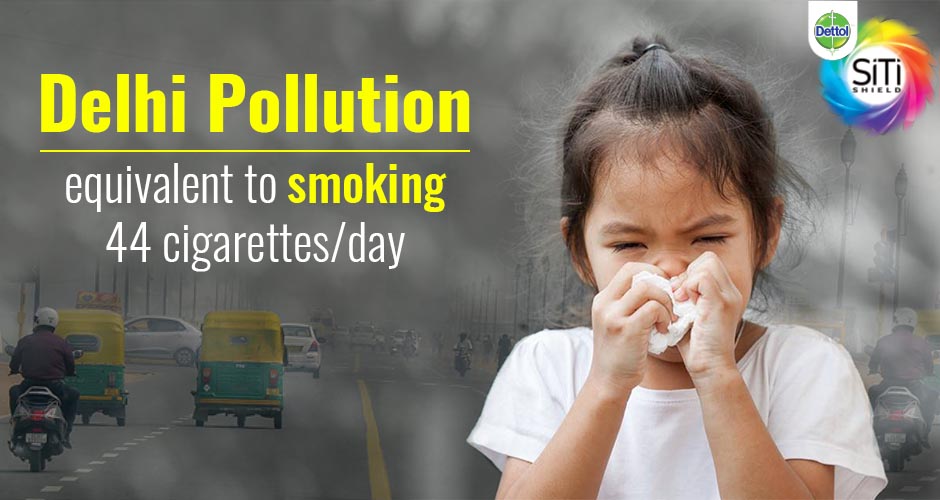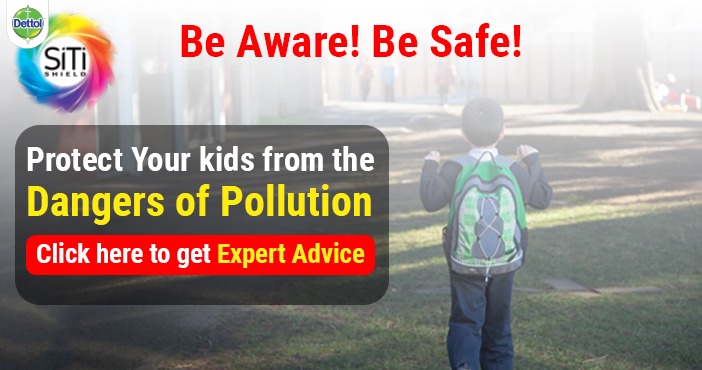
Delhi Pollution : How badly are your kids affected?
Have you started experiencing the familiar feelings of difficulty in breathing, stinging eyes, and inability to see almost anything in the haze ? Welcome to the Delhi winters. Recent studies conducted by the WHO have proven that Delhi is the amongst the most polluted cities in the whole world.
 If the normal pollution levels in the city were not alarming enough, the upcoming winters definitely add to the city’s woes. Air pollution is Delhi is more harmful to children as it could have long term effects on their health. A child’s breathing rate is faster, so, naturally they breathe in more toxins. It’s safe to say that perhaps, Delhi isn’t the best place to bring your child up.
If the normal pollution levels in the city were not alarming enough, the upcoming winters definitely add to the city’s woes. Air pollution is Delhi is more harmful to children as it could have long term effects on their health. A child’s breathing rate is faster, so, naturally they breathe in more toxins. It’s safe to say that perhaps, Delhi isn’t the best place to bring your child up.

What causes Delhi's air pollution?
As Delhi is quite a large city, emissions from vehicles, surrounding industries, smoking, dust particles in the air, etc all play a role in contributing to air pollution. However, the situation takes a turn for the worse in winters due to a confluence of various factors such as:- Firecrackers in Diwali
- Crop burning in neighbouring states of Haryana and Punjab
- Burning garbage at night for warmth by Delhi's urban poor
- Toxic fumes from diesel engines
- Cooking stoves & air fresheners inside the home etc
- Low circulation of air and fog when combined with smoke becomes smog
Find out how hazardous it is in your part of the city

What is Air Quality Index?
Air quality is generally measured by looking at the very tiny particles in the air, smaller than 2.5 microns in size referred to as PM 2.5. As per a WHO report, Delhi has exceeded the maximum PM 2.5 limit by around 10 times. These particles pose great health risk since they are extremely fine, not visible to the naked eye and can enter our lungs and even our blood streams. They lead to serious respiratory diseases. Pollution agencies use quantities of pollutants (the major among them being PM 2.5) to determine the Air Quality Index (AQI) An index can be a quick way to tell people how good or bad something is. The AQI uses colors, and numbers, to tell you about the quality of air. An AQI Level of 0-50 is considered to be ideal and has no health implications. In the peak winters in many areas in Delhi the AQI level goes beyond 300 which is considered hazardous and completely unsafe. The AQI at most other areas also remain in the range of 200-300 which is also considered very unhealthy.How does Air pollution affect children?
Breathing contaminated air has a negative impact on human health. Children are the ones who suffer the most serious consequences. Let’s try and understand why children are most vulnerable to air pollution : #1. Children breathe more air per pound of body weight, so their exposure to air pollution is much greater than adults. #2. Children’s organs, including their lungs, develop until they reach their late teens, usually around the age of 18 and as per the studies conducted by World Health Organization developing organs are more sensitive to the toxic effects of air pollutant. #3. Children also absorb pollutants more readily than adults. #4. Air pollution is not only responsible for respiratory diseases, but it can also affect a child’s brain development, create abnormalities and lowers IQ. #5. There is also substantial evidence that significant exposure to air pollution can adversely affect foetuses and infant health. Dr KK Agarwal of the Indian Medical Association has stated that "Children are more prone to harmful effects of air pollution as their lungs are still growing... Breathing polluted air can hamper the growth of their lungs leading to breathing problems later on in life...” A large scale study carried out in 2010 by the Chittaranjan National Cancer Research Institute, Kolkata, looked at the health effects of air pollution on over 11,000 school children in Delhi. The findings of the study were very serious. It was found that Delhi’s kids had 1.8 times more respiratory illnesses such as running or stuffy nose, sneezing, sore throat and common cold with fever and 2 times more lower respiratory illnesses such as dry cough, sputum-producing cough, wheezing breath, breathlessness on exertion, chest pain etc compared to children in areas with less air pollution. According to the UNICEF, air pollution is the cause of death for 600,000 children across the world, every single year.How can Pollution masks help?
With all this really unsettling information about the pollution level in our city, it is normal for us parents to scramble for protective methods. With so many people wearing masks, you may also be considering a pollution mask to save your family. Well if you opt for simple cotton masks such as those often used by surgeons, they may not really offer much protection against the severe PM 2.5 pollution. Research has shown that N-95 and N-99 respirator masks are amongst the most effective mask for protection against pollution. These codes represent the % of particles filtered; while a N-95 mask is able to filter out 95% of particulate matter, a N-99 masks can filter up to 99% of the particulate matter. If you are choosing a mask for your children, ensure that they are of the appropriate size and fit well, because if there is any open space between the mask and th nose, the mask will not be effective.What steps can parents take?
#1. Make sure you monitor. Watch out for the AQI in your area before you decide to step out. In peak winter season, the early morning and late evenings should be completely avoided for any outdoor activities with kids. The SAFAR-AIR App- an initiative by the Ministry of Earth Sciences, Govt of India gives accurate and locality wise details of the pollution levels- the exact value of the AQI- and indicating it with colour-coded system that describes whether the air is Good/Moderate/Poor/Very Poor/Severe. #2. Experts suggest that consuming food that is rich in antioxidants can shelter humans from pollution. These include all the fruits and vegetables, especially those rich with Vitamin A and Vitamin C. #3. Noon to 5 PM is the time when due to sunny conditions, the air pollutants disperse and is relatively a safer time for kids to venture out in the winters. #4. Invest in a good Air purifier with HEPA filters (high-efficiency particulate air). A HEPA filter is a type of mechanical air filter that help in filtering out the dust particles to keep the indoors safe and clean. There are various sizes and prices to choose from. #5. Put indoor plants around your house, such as Peace lily, Chrysanthemum, Snake plant, Areca Palm, Aloe vera. They are natural air-purifiers as per a NASA study. #6. When venturing out, choose good quality air masks, since they protect against air pollution. They are usually made of comfortable fabrics like cotton and are ergonomically designed to rest over the nose and lower face. They help to keep out dust, pollutants, bacteria and even some viruses. #7. Good fluid intake helps by detoxifying the body, and flushing out the toxins that can aggravate symptoms.This information is brought to you by Dettol Siti Shield
null